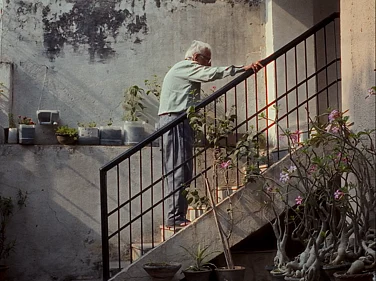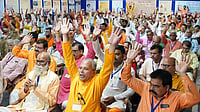Before they eventually die, cultures and societies tend to decompose first. Unlike people. The signs of rot in Goa become even more evident when the editor comes up with the brief: “Write about Goa using zombies as a context”. The connection, she said, was once made in a film called Go Goa Gone, India’s first zombie movie.
The 2013 film, set in Goa, was perhaps a popular one, because its makers are in the midst of producing a sequel. Maybe they too know there’s more ghoul in Goa now, feasting on the crumbs of what was once paradise.
ALSO READ: Horror As The Theme Of Our Lives
The early sign of societal decomposition is the all-pervasive air of decadence in Goa. The song and dance routine is something one conventionally associates Goa with in mainstream movies, songs and popular caricatures of its natives. Now, the routine is whirling its people to its own spell of a slow death trance. And somewhere in the midst of this, we’ve become zombies already.
The genesis of the zombies in Go Goa Gone is a rave party, where a new drug transforms the entire crowd, barring the protagonists, into zombies. Apparently, only a cloud of cocaine dust can rein in the walking dead. The zombies in the film are of all sorts. Brown, black, white, thin, fat, bald, with matted hair, men and women. In short, almost everyone is a zombie. Not very untrue, if one considers the Goa context.
In our progression as zombies, we have passed the period of early decay, where the dead tend to bloat. We are now in a stage of active putrefaction… the kind when the cadaver begins to emit a sickly, sweet odour. And we have become comfortable with our sweet smelling, rotting carcasses.
Over a decade ago, NPR (National Public Radio, USA) asked Jeffrey Mantz, an anthropology professor who teaches a class on zombies and their cultural importance at the George Mason University, to prepare a dossier of signature zombie traits. Not too dissimilar to how a key character in Go Goa Gone—Bunny, played by Anand Tiwari—attempts to crystallise the strengths and weaknesses of zombies ahead of a final assault. Compared to Bunny’s analysis, Mantz’s work provides a much clearer and rationalised list of characteristics, and thus provides the framework to understand Goa’s zombie phenomenon better.
Sign 1: They are everywhere, aka, the villa and gated complex zombies
While zombies in popular culture trudge slowly, arms held rigid at shoulder length, this breed in Goa don’t walk. Many of them are driven around seated on plush leather seats in posh cars. From the outside, you can see their misleading halos primed by years of treatment and fistfuls of product. If you are lucky, you could steal a glance at their branded gear. If not brands, gleaming logos on their sunglasses, handbags and watches shine through tinted car windows. There could also be an uneasy nanny in the front seat, fidgeting at her company. Their car doors open to a medley of perfumes, strong enough to mask the smell of death. They visit coffee houses, expensive bars, restaurants and boutiques, perform yoga at private beach enclaves and eat vegan burgers, as they rush from site to site with the right amount of lust in their eyes, looking for the perfect plot of water-fronted land to build a villa or a gated community.
Sign 2: Most will eat you if you get too close, aka tourists as zombies
Tourists are everywhere. On beaches, in bars, posing on once-quiet roads, in coconut groves, on scooters, cycles, popping through cars with sunroofs, in bhangra beat-powered jeeps, in trains, on flights, in casinos, on ferry boats, rivers, kayaks, massage parlours and spas. You just can’t miss them and their Goa wardrobes. All this class of zombies look to do is bite into a piece of Goa and tear some more bits of the clear sky to garnish their Instagram accounts. Get too close, and you run the risk of being called one of them. In Goa, however much you dodge them, they eventually get to you.
Decades back, Goa was a winter tourism destination. Those were simpler times, when even zombies took a break. Now with tourism in Goa marketed as a 24x7x365 phenomenon, there are zombies everywhere, all the time. In 2019, more than 80 lakh such zombies landed in Goa. That’s more than four-times the local population, and now the government wants to increase zombie footfalls by a few million more.
Sign 3: Zombies don’t always attack the living: Land-eaters as zombies
Jeffrey Mantz makes the case that zombies in African and Caribbean cultures don’t always attack the living. In Goa too, zombies seem to have a weakness for another kind of flesh… land, the crusty flesh that covers the earth. The story of Goa over the last three decades has been one of unabated land consumption and fast evaporation of resource, consumed by hordes of inbound zombies.
The insatiable hunger for property in Goa has hollowed its people inside out, leaving behind craters of emptiness. The hunger has also hollowed out incredible swathes of land, the same way zombies tend to leave their victims after gorging on them. Land in Goa in the contemporary sense resembles a black hole, which only zombies can dare to descend into.
ALSO READ: The Ghost As A Metaphor In Bengali Cinema
Sign 4: A zombie attack is the worst thing that can happen to you, aka, loss of identity as the worst-case zombie scenario
Mantz argues that zombies appear terrifying because “they represent one of our greatest fears: a loss of our autonomy, our ability to control our bodies and minds”. One couldn’t agree more.
The havoc wreaked by zombies in Goa have a direct correlation with the loss of the state’s unique identity, fostered over half a millennium. Sure, identity is invariably an evolving phenomenon. Sure, it is bound to evolve with time. But the speed at which the state is losing its own distinctiveness, thanks to the manifestation of various zombie strains listed here, Goa may soon end up becoming what it never really was.
ALSO READ: The ‘Spirit’Of Filmmaking
Sign 5: Of all the undead things you could become, zombies are the worst, aka, politicians as elite zombies
Without a doubt, as leaders of the pack, Goa’s political class are apex zombies, the top-of-the-line among the undead. Like elsewhere, politicians in Goa too have funnelled the zombie pandemic, their lust for land and facilitating policy for their invasion. They were probably the first to be bitten by the invading zombies, when they were guarding the gates, which ensured the superiority of their zombie bloodline. When at its worst, their administration has been anarchic and at its best, functioned in that same, slow, trudging gait we are accustomed to, when it comes to a zombie march.
Sign 6: They have become fast, because our world is fast, aka, the death of sussegado in zombie times
In recent times, the zombie invasion has hastened to a large extent on account of faster means of communication and transport, which makes our lives fast-paced too, according to Mantz. In Goa, there has been no respite to this invasion. This effectively means that zombies have altered the body clock in the average Goan. While zombies continue to trudge slowly as they wander about town or approach their targets, the speed with which they have accumulated in Goa and the pace of their destruction has deeply disoriented Goa’s sussegado (contended) vibe.
Sign 7: Oh, yes, zombies are real and you may have already been bitten, aka, native Goans as zombies
Goa is the land of the 20th-century lotus eaters, who draw deep from the seductive zombie narcotic. Our intellectuals are bare, journalists wilted (the author included), our scholars and writers quibble almost exclusively over the trivial, and, of late, our artists who are comfortable in their modest mediocrities—typical of a small state that dared to excel. As a people, our jaws are defanged and we speak incessantly, but in such meek voices that our words sound like babble. We elect the same governments and politicians even when the mark of their fangs on our necks haven’t healed. We invite our doom, but we cannot even spot it coming, let alone stop it.
As Goans, we are probably the worst zombies of the lot, because we are still in denial. We continue to believe that we are still victims of the Other, as we continue to feast on our own flesh.
(This appeared in the print edition as "Resident Evil Apocalypse")
(Views expressed are personal)
ALSO READ
Mayabhushan Nagvenkar is a writer and journalist based in Goa



























